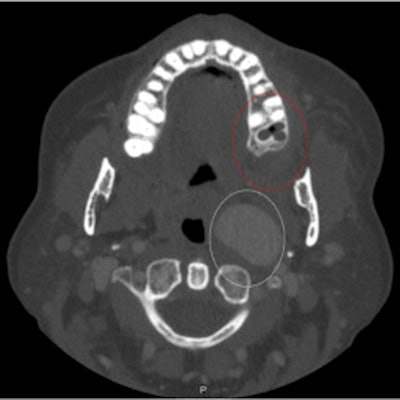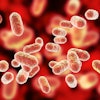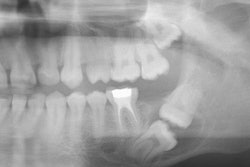
A 53-year-old woman was treated for a rare mycotic internal carotid artery (ICA) aneurysm that developed when a dental abscess-linked germ infected the artery, according to a case report published in the Journal of Vascular Surgery Cases, Innovations, and Techniques.
It is believed to be the first reported case in which this rare vascular phenomenon developed from Haemophilus parainfluenzae, a small Gram-negative pathogen that is a common part of the upper airway microbiota and is associated with dental abscesses and infections. Only a handful of mycotic ICA aneurysm cases have been reported following dental abscesses or procedures, the authors wrote.
"Haemophilus parainfluenzae from a dental abscess is a potential cause of mycotic internal carotid artery (ICA) aneurysm," wrote the authors, led by Dr. Andrea Obi of the University of Michigan (J Vasc Surg Cases Innov Tech, August 6, 2022).
A 53-year-old woman with neck swelling
After experiencing three days of increasing soft-tissue swelling on the left side of her neck, the woman presented to the emergency department. She had a history of end-stage renal disease on dialysis, and the day before, she had tooth #18 extracted and had significant purulent drainage, according to the report.
The woman underwent a computed tomography (CT) scan that revealed a large ICA aneurysm measuring 2.3 x 2.7 x 2.3 cm, which was located 1.3 cm anterior to a small residual abscess. Dentistry was consulted, and she was prescribed intravenous antibiotics. Also, blood samples were taken and sent for testing, they wrote.
 An axial CT scan of the patient's head and neck reveals a dental abscess (red circle) and an ICA aneurysm (white circle). Images courtesy of Obi et al. Licensed by CC BY 4.0.
An axial CT scan of the patient's head and neck reveals a dental abscess (red circle) and an ICA aneurysm (white circle). Images courtesy of Obi et al. Licensed by CC BY 4.0.Due to the proximity of the ICA aneurysm to the dental abscess, clinicians were concerned about a potential mycotic aneurysm. Three days later, the patient underwent repair of the carotid artery aneurysm, the authors wrote.
 A perioperative image of the proximal (white arrow) and distal (black arrow) ICA with the aneurysm identified in the dotted white circle. The glossopharyngeal nerve (G) overlies the ICA aneurysm, and the hypoglossal nerve (H) is below the aneurysm on the mid-ICA.
A perioperative image of the proximal (white arrow) and distal (black arrow) ICA with the aneurysm identified in the dotted white circle. The glossopharyngeal nerve (G) overlies the ICA aneurysm, and the hypoglossal nerve (H) is below the aneurysm on the mid-ICA.On the third day after surgery, the woman was discharged and told to continue with antibiotics for six weeks. Though her blood samples were negative, aneurysm tissue grew H. parainfluenzae. Since this pathogen has been associated with endocarditis, she underwent a transthoracic echocardiogram, which showed no evidence of valvular vegetation.
A rare, life-threatening condition
Mycotic extracranial carotid artery aneurysms are unusual presentations of a carotid artery aneurysm. Only about 100 cases have been reported, and Staphylococcus aureus and Salmonella are the most common pathogens linked to these aneurysms.
Clinicians believe these aneurysms occur for a number of reasons, including the following:
- Direct bacterial infection of the wall of the carotid artery
- An existing aneurysm
- Contiguous spread from a nearby infection
- Septic occlusion of the vasa vasorum
- Immune complex deposition followed by arterial wall damage
Though a mycotic ICA aneurysm seldom ruptures, surgical repair should be completed within three days to prevent serious complications. If a blood clot develops within an aneurysm and breaks free, it can prevent blood from flowing to the brain, causing a stroke, they wrote.
Fortunately, in this case, the patient remains symptom-free more than two years after the surgery, the authors wrote.
"To our knowledge, presence of H. parainfluenzae has not been reported as a potential pathogenic driver of mycotic ICA aneurysm," Obi et al wrote.




















